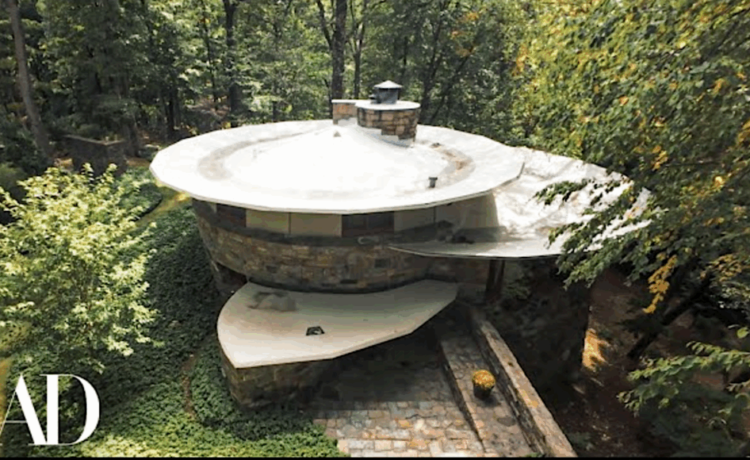American is a tricky word. It can refer to everyone and everything of or pertaining to all the countries of North America — and potentially South America as well — but it’s commonly used with specific regard to the United States. For Frank Lloyd Wright, linguistic as well as architectural perfectionist, this was an untenable state of affairs. To his mind, the newest civilization of the New World, a vast land that offered man the rare chance to remake himself, needed an adjective all its own. And so, repurposing a demonym proposed by geographer James Duff Law in the nineteen-hundreds, Wright began to refer to his not just architectural but also broadly cultural project as Usonian.
Wright completed the first of his so-called “Usonian houses,” the Herbert and Katherine Jacobs House in Madison, Wisconsin, in the middle of the Great Depression. Challenged to “create a decent home for $5,000,” says the Frank Lloyd Wright Foundation’s web site, the architect seized the chance to realize “a new affordable architecture that freed itself from European conventions and responded to the American landscape.”
This first Usonian house and its 60 or so successors “related directly to the earth, unimpeded by a foundation, front porch, protruding chimney, or distracting shrubbery. Glass curtain walls and natural materials like wood, stone and brick further tied the house to its environment.” In Pleasantville, New York, there even exists a Usonia Historic District, three of whose 47 homes were designed by Wright himself.
The BBC Global video at the top of the post offers a tour of one of the Usonia Historic District’s houses led by the sole surviving original owner, the 100-year-old Roland Reisley. The Architectural Digest video above features Reisley’s home as well as the Bertha and Sol Friedman House, which Wright dubbed Toyhill. Both have been kept as adherent as possible to the vision that inspired them, and that was meant to inspire a renaissance in American civilization. The Usonian homes may have fallen short of Wright’s Utopian hopes, but they did have a certain influence on postwar suburb-builders, and have much enriched the lives of their more appreciative inhabitants. The centenarian Reisley credits his startling youthfulness to the man-made and natural beauty of his domestic surroundings — but then, this last of the Usonians also happens to be one of the rare clients who could get along with Frank Lloyd Wright.
Related content:
What Frank Lloyd Wright’s Unusual Windows Tell Us About His Architectural Genius
How Frank Lloyd Wright’s Architecture Evolved Over 70 Years and Changed America
Frank Lloyd Wright Designs an Urban Utopia: See His Hand-Drawn Sketches of Broadacre City (1932)
How Frank Lloyd Wright Became Frank Lloyd Wright: A Video Introduction
Based in Seoul, Colin Marshall writes and broadcasts on cities, language, and culture. His projects include the Substack newsletter Books on Cities and the book The Stateless City: a Walk through 21st-Century Los Angeles. Follow him on the social network formerly known as Twitter at @colinmarshall.















